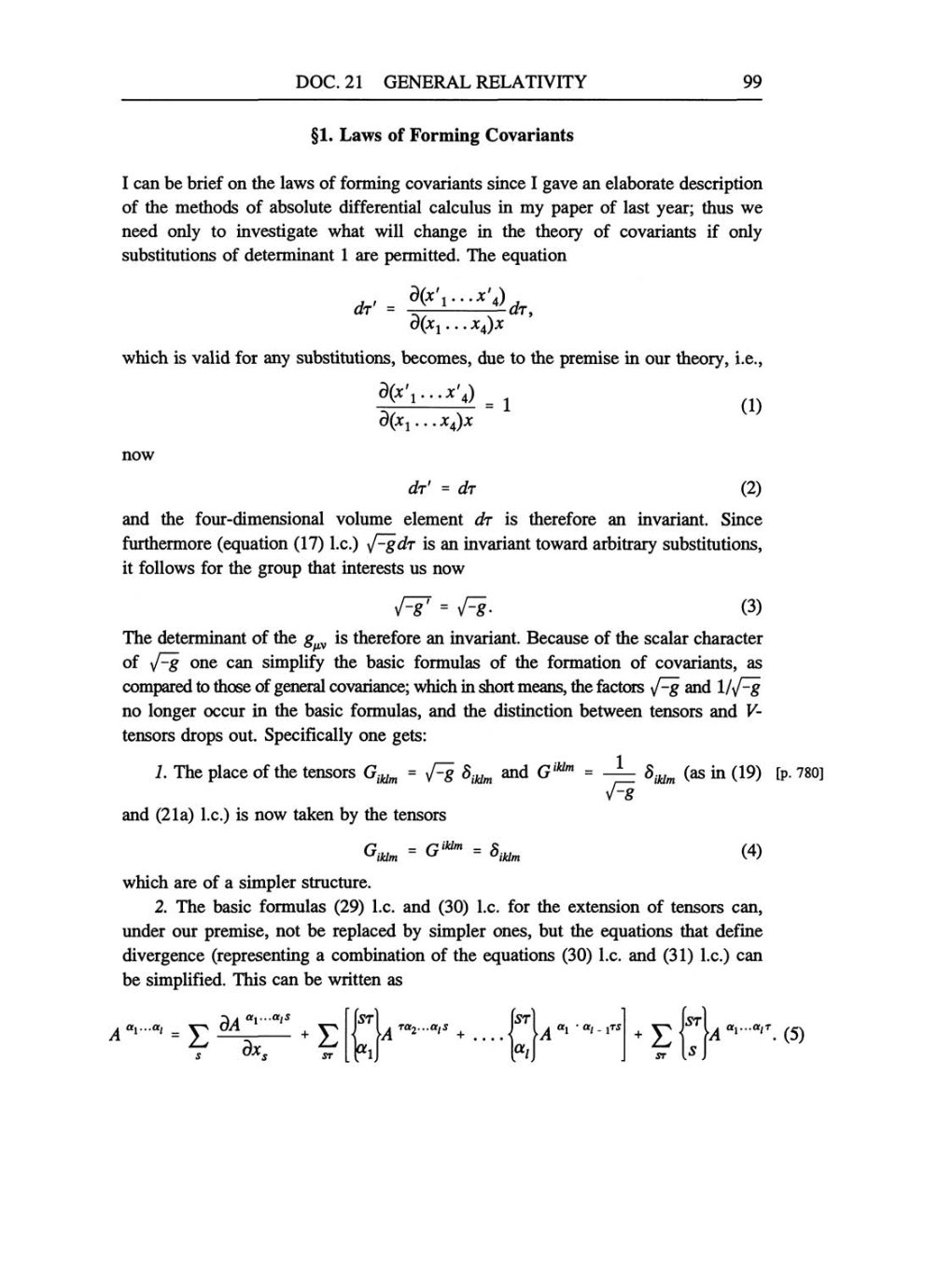DOC.
21
GENERAL RELATIVITY 99
§1.
Laws
of
Forming
Covariants
I
can
be brief
on
the laws of
forming
covariants since I
gave
an
elaborate
description
of the methods of absolute differential
calculus
in
my paper
of last
year;
thus
we
need
only
to
investigate
what will
change
in the
theory
of
covariants
if
only
substitutions
of
determinant
1
are
permitted.
The
equation
4t,
__
a(xj...
jc4)X
which is valid for
any substitutions, becomes,
due to the
premise
in
our
theory,
i.e.,
...
x\)
...
x^)x
=
1
(1)
now
dr'
=
dr
(2)
and the four-dimensional volume element
dr
is therefore
an
invariant. Since
furthermore
(equation (17) l.c.)
sf-gdr is
an
invariant toward
arbitrary
substitutions,
it follows for the
group
that interests
us now
v/-g7
=
\F-g.
(3)
The determinant
of
the
gßv
is therefore
an
invariant. Because
of
the scalar character
of y-g
one can simplify
the basic
formulas of
the
formation
of
covariants,
as
compared
to those of
general covariance;
which
in short
means,
the
factors
yf-g
and 1//-g
no
longer
occur
in the basic
formulas,
and the distinction between tensors and
V–
tensors
drops
out.
Specifically
one gets:
1.
The
place
of
the
tensors
Giklm
=
yf-g
8iklm
and
Giklm
=
iklm
1/-g
Siklm
(as in
(19)
[p.
780]
and
(21a) l.c.)
is
now
taken
by
the
tensors
G
=
Giklm
=
£
iklm
^
°:iklm
(4)
which
are
of
a
simpler
structure.
2.
The basic formulas
(29)
l.c. and
(30)
l.c. for the extension of
tensors
can,
under
our
premise,
not
be
replaced by simpler
ones,
but the
equations
that define
divergence (representing a
combination
of
the
equations (30)
l.c. and
(31)
l.c.)
can
be
simplified.
This
can
be written
as
A
av..ai
=
dA
dx
E
ST
rai')...aiS
+
ST
al
'
al
-
iT5
a
i
E
ST
ST
A.
(5)
